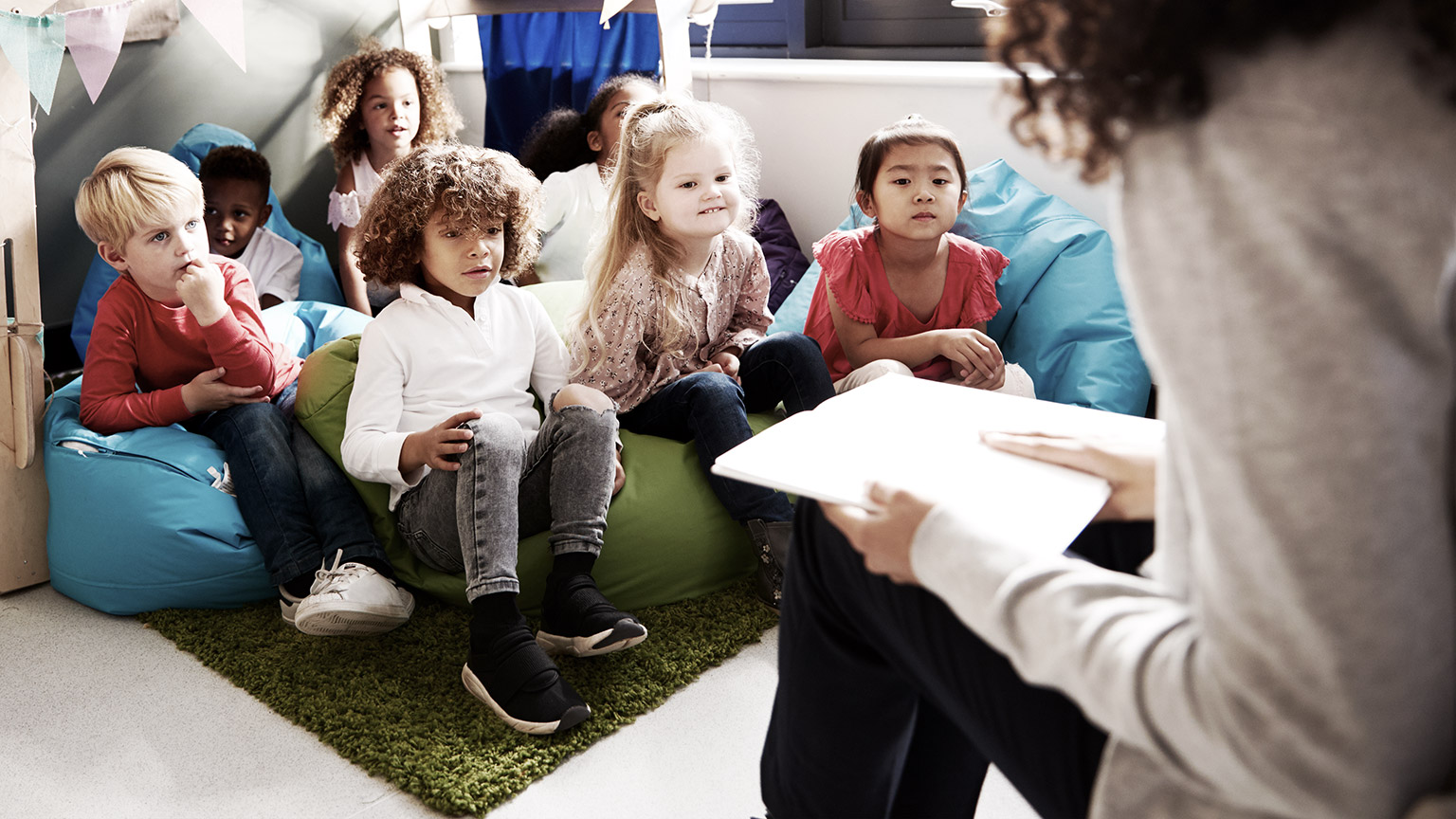Reading to children helps them in many ways and is an important activity for healthy development.
Learning the following terms will help you understand this section.
| Philosophical |
Dictionary meaning: Relating or devoted to the study of the fundamental nature of nature, reality, and existence A theory or attitude that acts as a guiding principle or behaviour. --- In this context: It is the study of child behaviours and how they relate to education. We can apply the theories to how early childhood education centres should practice and educate the children in their care. |
|---|---|
| Cultural |
Dictionary meaning: Relating to the ideas, customs, and social behaviour of one’s culture --- In this context: It incorporates cultural beliefs, customs, ideas, and social behaviours into learning every day within the early childhood education centre. |
They are not stand-alone approaches, though, a centre may choose a philosophical approach to their curriculum alongside a strong cultural context or variety of contexts to ensure the tamariki in their care and their whānau have a sense of belonging.
For your assessment, you will be asked to compare two philosophical approaches and two cultural contexts.
| Philosophical | Cultural |
|---|---|
| Kindergarten Montessori Steiner/Waldorf Kohanga Reo Pasifika based philosophies Apii Fakakoloa philosophy Reggio Emilia; Resources for Infant Educators (R.I.E) Froebel |
Te Whare Tapa Wha model Fonofale model Kakala model Te Wheke |
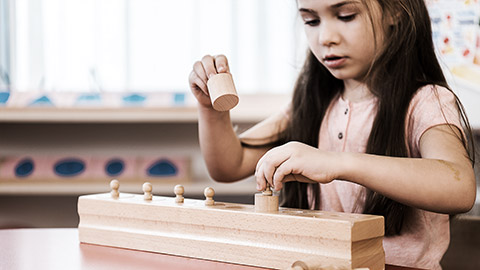
Montessori provides a play-based approach to learning, where students progress through developmental 'toys'.
Play and self-discovery-based methods
There are many different educational philosophies throughout the world — all of which are designed to promote academic and social growth in children. They take many shapes and forms and come from a variety of perspectives, focusing on different aspects of children’s intellectual, cognitive, and social development.
Some of the most child-centred educational philosophies have their origins in the theories of child development specialists and psychologists who believe that young children learn best through play and self-discovery. Among the most well-known of these philosophies are the Froebel, the Montessori, the Reggio Emilia and the Steiner/Waldorf
Method (developed by Rudolf Steiner).
These four methods all approach early learning from a developmental perspective and stress the importance of play and self-directed exploration. There are many similarities in the approaches as they all strive to educate the “whole child” and believe that children should be responsible for their own learning to varying degrees. There are also several differences in the philosophies and environments of the four different methods.
1. The Froebel Method
Modern kindergarten owes its beginnings to the German educator Friedrich Froebel. In 1837, Froebel created a program based on principles of early childhood specialists which became the foundation for kindergartens everywhere, as well as several educational philosophies that are the basis of many preschool and early education methods today.
Froebel believed that young children possess unique capabilities and needs, and that adults should serve as the “gardeners” of children’s potential. Froebel said that young children learn best in environments that provide a stimulating and prepared environment, where they can explore and learn from their own way of seeing the world.
Key Features of Froebel Schooling Methods
Froebel education stresses that parents are the first educators for children, and that there should be close links between home and school. The main goal of a Froebel education is to teach the whole child in all developmental areas: socially, academically, emotionally, physically and spiritually.
The four main components of the Froebel Method are:
- motor expression
- social participation
- free self-expression
- creativity.
The Froebel philosophy stresses that:
- Play drives learning.
Play meets the biological need to discover how things work. Froebel education believes that play is purposeful and not idle, and that meaning is created through hands-on play activities. - Children can only learn what they are ready for.
Children develop differently and should be allowed to learn at their own developmental pace. - The teacher should serve as a guide.
Teachers should not be viewed as the keepers of knowledge, but instead as guides who can help lead a child to understand the concept. - The classroom should be a prepared environment.
Although Froebel classrooms may look like they are designed for free play, they are actually very carefully prepared, presenting children with the tools and materials that are optimal for their level of development. - Movement is imperative for young learners.
Froebel classrooms are alive with finger plays, songs, and all forms of movement.
Another key component of a Froebel classroom is the use of the materials referred to as the Froebel Gifts and Occupations. The Froebel gifts are a series of sets of specially designed materials, which provide hands-on explorations of solids, surfaces, lines, rings, and points. Children use these materials to explore principles of movement, math, and construction. The occupations are a set of activities designed to provide further hands-on explorations and practice with skills like clay work, woodwork, lacing, weaving, drawing, and cutting. Again, these materials are designed to allow children uninterrupted periods of play where they construct their own meaning of how things work.
Strengths of the Froebel Method
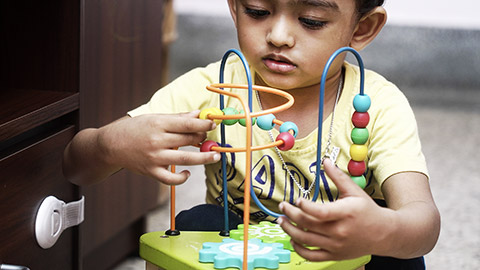
There are many strengths to the Froebel method. One of the main strengths for students who attend a Froebel School is that they learn to see problems from many angles and to solve them independently. As they work with materials, they gain perseverance as they attempt to figure out how to manipulate them to create the output they want.
The Froebel method also works well to encourage independence in students. Since they are used to solving problems that arise during their play, they feel confident in their ability to handle issues as they arise without always asking for help.
The Froebel classroom develops fine motor skills in students, which aids them with later learning and activities, such as writing and advanced art skills.
Criticisms of Froebel Education
Critics of the Froebel education believed that the structure of the program was too rigid. More progressive educators modified the original program into the kindergarten that we know today, which includes more free and imaginative play. In addition to the Froebel gifts, other unstructured materials were added such as doll houses and large blocks where children could experience more free-play and social interaction. Reformers decided that children needed other ways to express themselves, and also added music, art, and movement activities to Froebel’s original ideas.
There are also those who believe that there is too much focus on fine motor skills and that more language, writing, and reading would benefit students. Many think that the focus on the gifts and occupations should be supplemented with more academic types of activities — reading and writing specifically so that children who are developmentally ready for these types of activities will have the opportunity available to them.
2. The Montessori Method
The Montessori Method, which is popular today in many places around the world, was developed by Maria Montessori in 1897 in Italy. Montessori began to develop her methods after attending pedagogy courses in Rome, and carefully observing children from birth.
In 1907, Montessori opened her first school, Casa dei Bambini, or Children’s House, and her methods attracted interest from educators throughout the world. In 1929, Montessori founded the Association Montessori Internationale to support the international growth of Montessori methods and teacher education. Montessori schools are based on the belief that children are naturally eager learners who can create meaning in a carefully prepared and supportive environment.
Hallmarks of Montessori include:
- Mixed age groupings
Children of mixed ages work together in classrooms. Younger students observe older ones, which helps to prepare them for upcoming and more challenging materials. Older students serve as mentors and guides for those who are younger. - Big picture focus
The Montessori approach operates on the belief that children learn best when they possess background knowledge about a subject. The Montessori curriculum is often referred to as 'cosmic', meaning that learning builds on prior exposure, building deep understanding. - Focus on sensitive, or critical, periods
Dr Montessori believed that there are certain times when children could best obtain certain skills. Instruction is matched to a child’s sensitive window for acquiring the skill. - Prepared Environment
The physical environment of a Montessori classroom is designed with children in mind. All furniture is appropriately sized, and materials are placed to be accessible by the children in the room. The environment is prepared with developmentally appropriate materials designed to stimulate multiple senses and stimulate learning. Self-correcting materials are available so that students may work on them independently. These materials can be cross-curricular, including blocks, letters, and other types of manipulatives. - Focus on peace
Respect for all life forms is stressed, along with a focus on inner peace, peaceful interactions, social justice and community service.
The Montessori classroom is home to many specially designed materials (developmental 'toys') that are appealing to children and are designed to teach one skill at a time. They must learn how to use one before moving along to the next. The materials are designed so that they can have multiple uses as well, and grow with the child. The materials are designed to invite interaction and activity, and use a hands-on approach to make abstract concepts, such as base 10 math, more concrete.
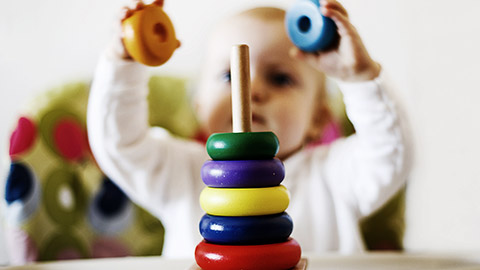
Key Strengths of the Montessori Approach
Children are prepared for the real world, where they work side by side with people of all ages and personalities. They also develop self-discipline, independence and analytical thinking. All materials in a Montessori classroom have a proper place, and it is the responsibility of each student to properly store their materials when they are done to maintain order, which is very important to this philosophy.
Students who learn under the Montessori Method develop a true understanding of their work, instead of just rote memorization. They develop a life-long love for learning. This method focuses on personal growth and development and has been shown to support maturity and creativity.
Montessori lessons fall into three main categories so students become well-rounded and independent.
- Lessons for practical life
- Sensory
- Language
Criticisms of Montessori Schooling
Critics of the Montessori Method refer to the cost of maintaining a program. Since the approach uses specific furniture and materials, which are high-quality, the costs can be rather high.
Another criticism of the approach is that the classrooms contain only one of each piece of 'work', as the activities are referred to. In theory, this should encourage children to share, but critics state that it often creates competition between students and that older students often win out over the younger ones.
Many people feel that it can be difficult for Montessori students to transition into a 'regular' classroom, where they may be sitting in rows and working on a prescribed curriculum. Many parents send their children to Montessori programs for preschool and first grade, but then move them into traditional elementary schools, where some have reported the struggle of children to conform to the norms of public education.
3. The Reggio Emilia Method
The Reggio Emilia Method was first introduced following World War II in Italy by a group of educators and parents who wanted to create a community-centred approach to teaching and learning. The director of this movement was Loris Malaguzzi, who studied the works of many pedagogists and child-development specialists and used their theories to create an atmosphere that he felt would best support and encourage early childhood development.
These educators and parents based their approach on the ideas of respect, responsibility, and community through an atmosphere of exploration and discovery.
Key Features of Reggio Schooling

The Reggio philosophy is based on natural child development as researched and described by many child psychologists and researchers.
Key features of the Reggio philosophy:
- Children learn best through a multi-sensory approach.
Reggio classrooms contain experiences that appeal to all senses. Children will be touching, seeing, hearing, moving, speaking, and listening. - Children should have some control over their own learning.
Reggio classrooms are about children making their own meaning through exploration and discovery. Children are seen as co-constructors of knowledge, instead of being viewed as targets of instruction. They participate in many different projects where they can observe, hypothesize, question, and clarify to create understanding. - Children must have many ways to express themselves.
Children in Reggio schools gain a deep understanding of the materials in their classrooms and the world around them. They look at materials in various ways and participate in long-term projects designed to let them view a subject from many angles. - Relationships are important.
Both relationships with other children and with adults are vital in the Reggio Emilia classroom. Children are expected to work together in communities to collaborate with each other. - Children need to have relationships with the materials they are exploring.
The physical environment of a Reggio classroom is highly important and designed to be visually pleasing and engaging. The environment is considered to be the third teacher in a Reggio setting.
In addition to these principles, Reggio Emilia educators refer to the “Hundred Languages of Children” which refers to the many ways that children express themselves. Children are encouraged to display their understanding through a variety of means.
Key Strengths of the Reggio Schooling Method
Most people agree that the main strength of the Reggio method is the ability to use the environment as a teacher. Other strengths are the mix of long- and short-term projects which provide students with a deep understanding of the subject matter.
Another strength is the documentation that Reggio teachers collect about their students. This is where the idea of a portfolio of student work originated.
In the Reggio method, teachers are seen as researchers. Flowcharts are very important in these classrooms to document what has occurred and for future considerations.
Criticisms of Reggio Emilia Schooling
The Reggio method had been called one of the best approaches in the world by many different news magazines and researchers, but it is not without its critics.
The main criticism of the Reggio approach is that it is not a formal model, with defined methods, and teacher certification. Without teacher certification, it is sometimes difficult for teachers to truly know how to implement this model, and classrooms can sometimes be chaotic.
4. The Steiner/Waldorf Method
The Steiner/Waldorf method is another approach that is based on an understanding of child development. It was originated by Rudolf Steiner in Germany, and his first school opened in 1919. This method was modelled strongly on the work of Jean Piaget, who believed that young children learn best through play and that childhood is divided into three stages:
- Physical — 0 to 7 years,
- Imagination — 7 to 14 years
- Spirit —14 to 21 years
Key Features of Steiner/Waldorf Schooling Methods
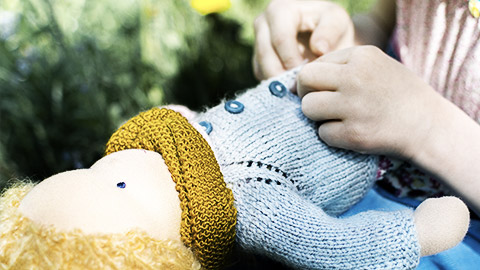
One of the toys in a Waldorf classroom is an old-fashioned, faceless doll. It is believed that this stimulates creative thinking and imagination in children.
All Steiner/Waldorf schools will include these key approaches:
- Children need to learn through all senses.
All lessons are designed to appeal to the “head, hands, and heart” meaning that it is important to educate the whole child. Steiner believed that people actually have twelve senses, the traditional five plus thought language, balance, movement, warmth, life, and individuality. - Imagination is at the heart of learning.
Steiner/Waldorf classrooms include a great deal of storytelling, fantasy, make-believe play, art, drama, and crafts. Note the 'faceless doll' above. - Life skills are imperative to a complete education.
Children in Steiner/Waldorf classrooms are taught things like wood carving, sewing, gardening, and sculpting. They are offered opportunities to learn a musical instrument or how to knit. These things give children a sense of achievement and allow them to learn more complex skills later in life. - A lifelong love for learning can be achieved through the arts.
This serves to create a sense of wonder about different subjects. Curriculums, such as math, can be examined through graphic-arts projects. A multi-disciplinary approach is ideal for this method.
In addition to these key features, the Steiner/Waldorf approach believes that children must be surrounded by beauty in a visually pleasing atmosphere. The classroom is a home-like setting filled with natural materials where children have periods of guided free play — focusing on their developmental needs.
Benefits of Steiner/Waldorf Schooling
Children in a Steiner/Waldorf classroom are taught respect, cooperation, compassion and social responsibility. Because of the focus on arts, Steiner/Waldorf students score well on tests of creativity. Students are discouraged from using technology at young ages, which contributes to their creative and imaginative thinking.
This lack of exposure to televisions, computers, and other forms of technology creates students with extended attention spans. They are able to focus on tasks for longer periods of time as they are not used to the instant gratification that technology can provide.
Criticisms of Steiner/Waldorf Schooling
The main criticism of Steiner/Waldorf schooling is that children are not taught to read until they are seven or eight years old. Many worry that children will fall behind, particularly if they transfer to a traditional school where reading is taught at an earlier age.
Teachers who are trained in Steiner/Waldorf receive training in the spiritual philosophy known as Anthroposophy, which includes theories about spirits on earth and reincarnation. These ideals are not taught explicitly to students in Steiner/Waldorf schools, but many worry that the schools have hidden agendas.
Activities - Philosophical approaches
1. Complete the activities that test your knowledge of the four main philosophical approaches to early childhood education.
2. Choose two of the philosophical approaches and create a document paraphrasing the key points, and indicating what ideas and activities from it you plan to use when in your own practice. You will be able to refer to this for your assessments.
3. Document your answers to the following questions and then create a journal post with your answers and publish it for your peers.
- What makes each of the approaches unique?
- What do you like about each of the approaches?
- What do you not like about each of the approaches?
- What are two similarities between the approaches?
- What are two differences between the approaches?
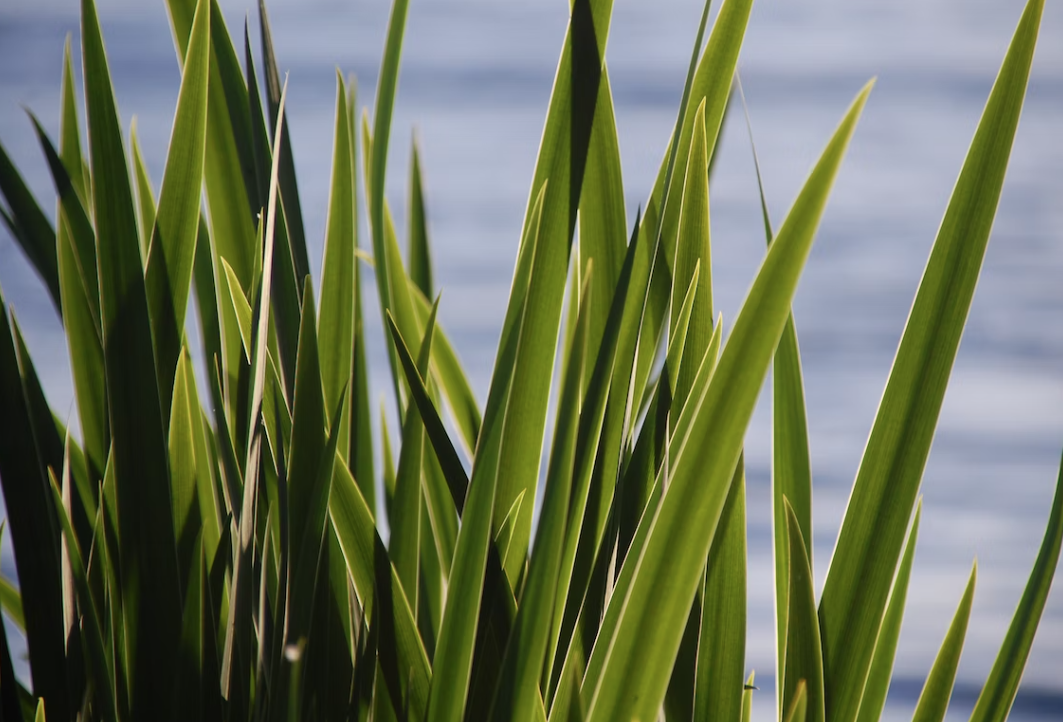
teara.govt.nzMāori liken the flax plant (Harakeke) to a family, with the central shoot (rito) representing the baby. The leaves protecting the rito are called the parents (awhi rito or mātua). Only the leaves on the outside of the plant, the grandparents (tūpuna), can be cut, or else the plant will be weakened.
A cultural context or approach in early childhood education is about incorporating culture into the everyday learning happening at the centre — making culture a focus, and respecting the beliefs, values, and taboos (tapu) within the cultures in our centre and in our community.
We are going to look at three cultural approaches.
- Fonofale
- Te Whare Tapa Wha
- Te Wheke
Fonofale
The Fonofale model was created as a Pacific model of health, encompassing values and beliefs from the Cook Islands, Samoa, Tonga, Fiji, Niue, and Tokelau. Developed by Fuimaono Karl Pulotu-Endemann, the Fonofale model is a system of wellbeing that not only acknowledges but embraces, Pacific perspectives and ways of being. It's named after Fuimaono Karl Puooto-Endermann’s grandmother, Fonofale.
The main point of the model is knowing that individuals come with their own sense of identity, heritage, and history.
-
Time:
This dimension relates to the actual or specific time in history impacting Pacific people. -
The Roof (Culture) :
This represents cultural values and beliefs that the shelter is someone's family for life. Culture is first introduced to children in their homes generally and is constantly evolving and adapting. The New Zealand culture includes the culture and practices of Pacific people that have grown up in New Zealand and those that have grown up in their own island homes. In some Pacific families, the culture of that particular family may be practised slightly differently from other locations or families. Some may lean towards a Palagi orientation, while other families may incorporate varying degrees of culture in their everyday lives. For example, some use traditional methods of healing and western methods. -
Environment
This dimension addresses the relationship between Pacific people and their physical environment. The environment may be a rural or urban setting. -
Context
This dimension relates to the where/how/what and the meaning it has for that particular person or people. Context may include country of residence or heritage, legal, political, economic, and social factors. -
The four Pou
Between the roof and the foundation are the four Pou or posts. These Pou not only connect the culture and the family but are also continuous and interactive with each other. -
Physical
This dimension relates to the physical wellbeing of a person and all things that support or hinder a person's physical health such as food, water, air, and medications. -
Spiritual
This dimension relates to the sense of wellbeing that stems from a belief system in a world beyond that which our physical senses can access. It may be in the form of formal religions like Christianity. Spirituality can also be more connected to the natural world, including trees, mountains and rivers, stars, and animals plus language, a belief in spirits, ancestry, and history. A persona's level of spirituality can be deeply personal and a blend of many areas of thought. -
Mental
This dimension relates to the wellbeing or the health of the mind which involves thinking and emotions as well as how a person behaves. -
Other
This dimension relates to things that can directly or indirectly affect our health such as gender, sexuality, sexual orientation, age, and economic and social standings. -
Family
The foundation of the Fonofale represents the family, which is the foundation for all Pacific Island cultures. The family can be a nuclear (Mum, Dad + kids), extended (+grandparents, aunties, and cousins), or created family (those you have chosen to consider family) bound by kinship, titles, marriage, partnership or covenant, and/or an agreement. The family forms the basis of a Pacific Island social organisation. The history and gafa (geneology) are in the foundation/floor/family which ties them to titles, lands, sea, and to the Gods of the Pacific as well as to other cultures.
Te Whare Tapa Whā
This is a well-known Māori model of health and well-being that has been used across many sectors in New Zealand, such as health, education, and justice. The model describes health and wellbeing as a wharenui/meeting house with four walls.
The author of this philosophy, Sir Mason Durie has, for over 40 years, been at the forefront of transforming Māori health.
- Taha Tinana (physical wellbeing)
- Taha Hinengaro (mental wellbeing)
- Taha Wairua (spiritual wellbeing)
- Taha Whānau (family wellbeing).
The wharenui’s connection with the whenua (land) forms the foundation for the other four dimensions.
By nurturing and strengthening all dimensions, you support your and your whānau's health and wellbeing.
Hauora — a holistic approach to health
The Maori concept of wellbeing that encompasses the whole person.
Taha Wairua – spiritual health
The capacity for faith and a belief system that goes beyond the physical realm. Health is related to unseen and unspoken energies. The spiritual essence of a person is their life force. This determines us as individuals and as a collective, who and what we are, where we have come from and where we are going. A traditional Māori view of illness will focus on the wairua (spirit) to determine whether spiritual forces could be a contributing factor to poor health.
Taha Hinegaro – mental health
The capacity to communicate with others comfortably, think and feel, and the idea that mind and body are not able to be separated. Thoughts, feelings, and emotions are part of the body and soul. This is about how we see ourselves, our perception of how other people see us and a strong connection to Māori people and principles.
Taha Whānau – family health
The capacity to belong, to care and to share where individuals are part of wider social systems. Whānau provides us with the strength to be who we are. This is the link to our ancestors, ties with the past, the present, and the future. Understanding the importance of whānau and how it can contribute to illness and assist in curing illness is fundamental to understanding Māori health issues.
Taha tinana – physical health
The capacity for physical growth and development. Good physical health is a large factor in children's development. Our bodies support our minds. For Māori, the physical dimension is just one aspect of health and wellbeing and cannot be separated from the aspect of mind, spirit, and family.
Whenua - land
The foundations, our connection to the land and our roots. A connection to nature, for example, going for a hike, swimming in the sea, and putting your feet in dirt, has been shown to improve mental and physical wellbeing.
Te Wheke
The concept of Te Wheke — the octopus of great wisdom — is used to define family health. The head and eyes look after the health of the entire family, and the tentacles — which represent dimensions of health — are interwoven, representing the close relationship between the health dimensions.
The author, Dr Rangimarie Turuki Rose Pere CBE, wrote this in the opening of her explanatory document:
"Welcome to my world… come on a journey of sharing the ONENESS of the eight dimensions of my total well-being and development. The energy that I link into for my total well-being and development is the Octopus. This model of learning and teaching has been transmitted from our ancient ancestors Nga Potiki and Nga Uri- A- Maui, who have always lived here in New Zealand as Peacekeepers and intermarried with our other ancestors who came to New Zealand in the Great Fleet from the Pacific Islands approximately a thousand years ago."
-
The concept of Te Wheke
The head of the octopus represents te whānau and the eyes of the octopus are wairoa (total wellbeing for the individual and family.) -
Whatumanawa
The open and healthy expression of emotion -
Ha a koro ma, a kui ma
Breath of life from the people you are descended from -
Mana ake
The unique identity of individuals and family -
Mauri
The life force in people and objects -
Whanaungatanga
Extended family -
Taha Tihana
Physical wellbeing -
Hinengaro
The mind -
Wairuatanga
Spirituality
Activities - Cultural approaches
Compare the approaches
Review and compare the three models that we have looked at, Fonofale, Te Whare Tapa Whā and Te Wheke. Write bullet-pointed notes about the following:
- What do they have in common?
- How are they different?
- Do you prefer one in particular? Why does this one stand out to you?
- How can you use these approaches in your service?
Post your responses in a journal post and publish it for your peers.
